Media
Summary
Climate change is a leading problem in today’s society, and today we have a quartet of stories on its effect on the world around us. Plus, more coverage from the AAS meeting with three stories on black holes, as well as dating supernovae, breaking a star, and magnetic chaos in a galaxy.
Transcript
This is the Daily Space for today, Friday, January 15, 2021. I am your host, Dr. Pamela Gay, and I am here to put science in your brain.

This show marks the end of our second week of recording what we hope will be a constantly improving show for you to watch here on NowMedia. This show is put together by a tiny team who are learning as fast as we can. We are so grateful for all of you who have been here, and if you like what you see, we hope you’ll let people know about our little show. You can catch us here, but we also put out a podcast edition that includes unedited interviews and longer versions of some of our stories. You can find The Daily Space on iTunes, Spotify, Google Play, and wherever else you listen to podcasts.
We hate to admit you’ve seen a few typos, and we’re still learning how to bring you the best graphics we can, but our goal is to bring you better content every week as we bring you all that is new in space and astronomy.
And this includes bringing you content about our own special planet: Earth.
Change happens. You can look around our world and see the impact of both natural processes and human activity. Storms cause landslides and even forest fires, which change the structure of the landscape. People dig out dirt and plants to build structures, which can lead to more problems from the storms. Wind, rain, freezing, melting, volcanoes, earthquakes… so many processes affect the world around us, both on a large and small scale, that we struggle to track them.
This is why it’s amazing that scientists have determined that the arrival of Europeans in North America lead to an increase in the erosion rate and the rate of river sediment accumulation by a factor of ten. An international team analyzed 40,000 years of sediment at 126 sites across the continent to find the natural, background rate of erosion. Then they compared those values to the rate from the past 200 years. Humans moved as much material in the past century as would have naturally happened over 700-3000 years.
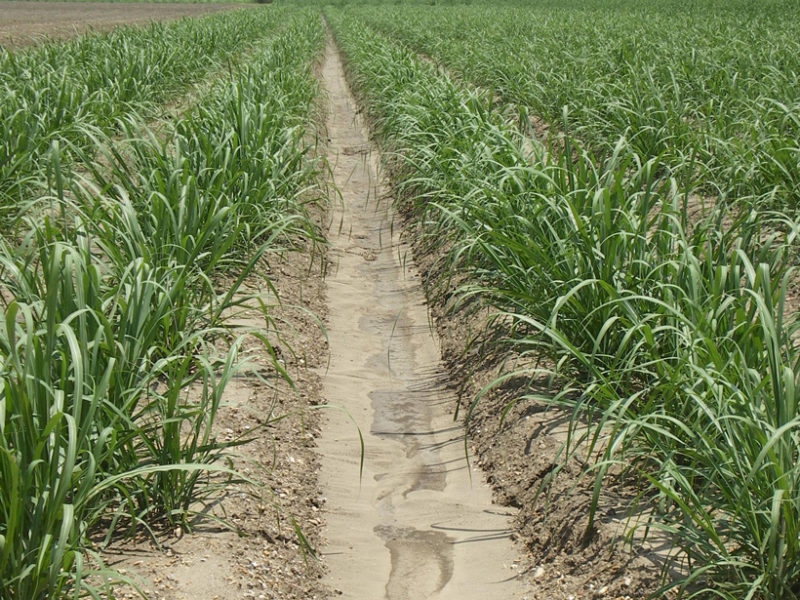
The work was published last year in Nature Communications, and lead author David Kemp noted: By having this huge compilation [of data] that stretches back many thousands of years, we’re able to contextualize the human impact against that natural geologic variability. It was a surprise to me that the jump was there and that it seemed to be so neatly coincident with European arrival.
You might think the effects would be limited to the east coast of North America, where the first of the European colonists set up shop, so to speak, but the study shows that the impact on the sedimentation rate is seen across the continent. Europeans brought their own techniques for agriculture, animal husbandry, and river management, and literally changed the world around them.
Of course, conservation efforts have the challenge of working against these massive changes to try and restore habitats to a more “natural” condition. The study notes there is good news in that sedimentation rates have been reduced in the last few decades due to those efforts. We as a planet need to do a better job of listening to our planet.
No, really. We need to listen to our planet, and that is what researchers have done in new work presented in the journal Geophysical Research Letters. Researchers listened to rocks by attaching sensors to boulders and monitoring the cracking noises they made due to weathering. They measured any resulting cracks and found that higher rates of fracture growth happened in higher temperatures and wetter air. Not a good sign when we already know we’re dealing with higher temps and bigger storms.

I always think of Doctor Who when we talk about rock erosion. “Water always wins.”
On top of accelerated weathering rates, breaking rocks can release carbon into rivers and oceans. Just what we need, right? And these results aren’t due to huge noticeable cracks in rocks; they come from a process known as subcritical cracking.
Lead author Missy Eppes explained: Subcritical cracking is analogous to the weeks-long growth of a crack on a car windshield, as opposed to the rapid cracking that occurs if you hit the same windshield with a hammer. The crack grows slowly and steadily, with very low forces being applied to that crack.
The team intends to expand their research to more types of rock, and we’ll update when they have more results.
Another result of our wetter atmosphere is the loss of coastal land. Coastlines are fickle to begin with, impacted by wind and wave, and even glaciers. Take Cape Cod, for example.
During the last ice age, the Laurentide Ice Sheet covered North America from eastern Canada down through New England, ending at what is now known as the Outer Lands. As the ice advanced and later retreated, it moved sediment and left behind glacial deposits. The landscape ended up malleable and pockmarked with kettle ponds that became the cranberry bogs of today.Cape Cod was free of ice only 18,000 years ago; the blink of an eye, geologically speaking.
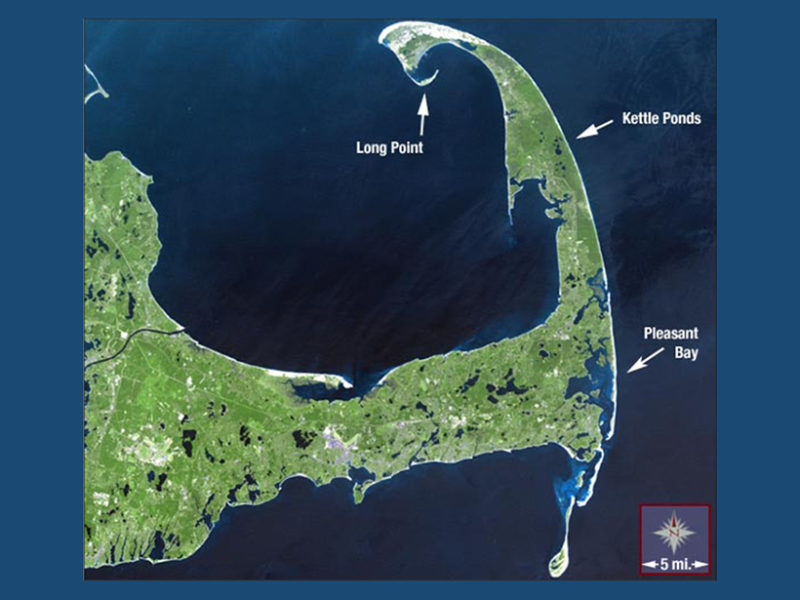
Cape Cod was also home to megafauna like mammoths as well as the Indigenous people that hunted them. But as the ice retreated, it also melted, and the sea levels rose, bit by bit, moving people and animals further inland. The currents around the shore changed, and the spit of land that forms the hook of the Cape formed as sand was moved in new directions. Provincetown, a fishing village that is home to 3000 residents and a huge tourist destination during the summer, was built.
But now the sea levels are rising again and alarmingly, they have risen by 28 centimeters since 1922 and are expected to rise to three meters by the year 2100. Flooding events are already on the rise and a huge nor’easter in 2018 inundated parts of the town. The airport could easily be impacted. Town planners are trying their best to shore up, well, the shore, by moving sand from the hook to the town.
Other parts of the Cape are being left alone to let nature take its course. No one is certain how long that will take. The highest point is only 49 meters in elevation. Some of the lowest points are at eight meters. And with all the uncertainties in climate models, estimates of the timeline for overtopping the Cape are vague at best. Climate change is real, though, and it is impacting real people now.
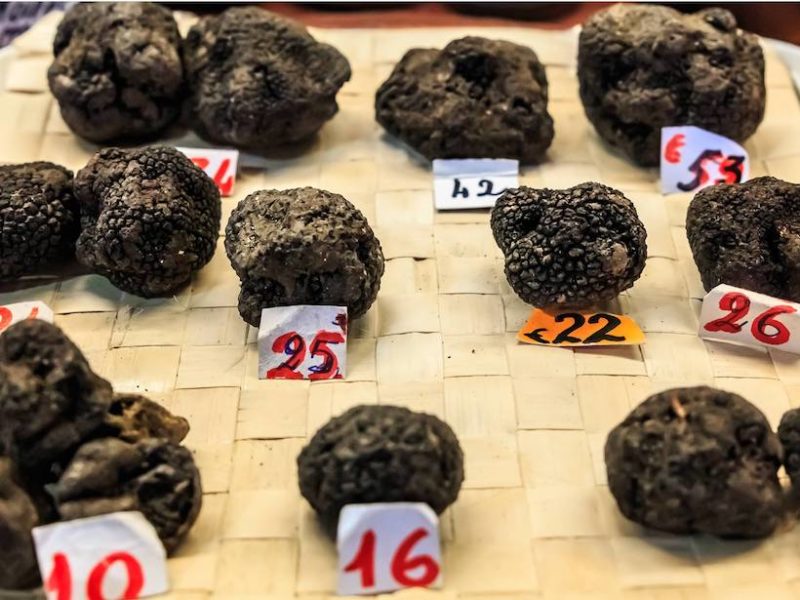
There is one small silver lining in climate change. One particular species of truffle, the Perigord, looks like it will thrive in wetter, warmer conditions. In new research published in the journal Scientific Reports, researchers reported the results of their research into just how several varieties will respond to climate change, and Perigord is going to do really. Plant now, though, everyone. It takes 5-15 years to establish a truffle orchard and actually harvest truffles.
In math and physics, there are few problems as annoying as the so-called three-body problem. When three objects are gravitationally pulled together in space, they often interact in chaotic ways that can’t be predicted with straight forward equations. Unfortunately, the universe doesn’t care what math is easy or hard for us to do; it is going to do what it is going to do, and one of the things it is going to do is periodically give three supermassive black holes a chance to interact as galaxies merge.
This isn’t a common event, but it’s an important one for astronomers to understand if we want to build a model for how massive galaxies have formed over time.

In work presented at this week’s American Astronomical Society conference, Stanford University’s Adi Foord presents the results of combing through myriad catalogs of galaxy images in optical, infrared, and X-ray light to find triple systems. It turns out that triple mergers are exceedingly rare, with only seven mergers or large systems being found in current survey data that had their central black holes within 30,000 lightyears of one another.
This isn’t a lot of data, but it is enough to see that these systems are highly varied. One of the seven only had one of its three black holes actively consuming dust and gas pushed in by the merger. One had no black holes actively feeding. Most commonly, in four out of the seven, two black holes were active, and in only one system all three black holes were feeding.
These results help us understand the full range of ways supermassive black holes can draw material and energy toward one another. A simple pair of supermassive black holes are theorized to have trouble shedding enough energy to allow the two monsters to merge, but it’s thought that a third black hole may be able to help redistribute that energy and make a merger possible.
These results seem to hint that anything is possible. The definitive can they/can’t they of supermassive black hole mergers is ultimately going to be seeing one in action. The planned LISA mission may someday be able to detect the gravitational waves of supermassive black holes if they occur. Let’s hope triple mergers aren’t required, but if they are, it looks like they might be able to find a way to do anything.
Black holes eat stars. We know this. We’ve managed to catch it happening. And now we’ve managed to find a star that is regularly flaring up as it swoops by its black hole. It is so regular, in fact, that it’s being called “Old Faithful” as it flashes every 114 days like clockwork.
In new work presented at the AAS meeting and soon to be published in The Astrophysical Journal, scientists used data from NASA’sSwift Observatory and TESS spacecraft and the telescopes in the All-Sky Automated Survey for Supernovae Network, or ASAS-SN, to observe the star and its regular flashes of light. The object is now called ASASSN-14ko, and it resides in our southern skies in a galaxy about 570 million light-years away.
The first flare was detected back in 2014, and it was thought to be a supernova. Then, lead author Anna Payne went back through the data in 2020 and found seventeen flares, all 114 days apart. This type of regular flare had never been seen before. So the team predicted that the galaxy would flare on May 17, 2020, joint observations were coordinated, and voila! The flare happened right on schedule. It was followed by two more predicted and observed flares in September and December of last year.
Basically, there is a star orbiting its galaxy that passes close enough to its black hole every 114 days to cause a flare as matter is pulled from it in a burst of energy. The black hole is estimated to be 20 times the mass of our own Milky Way’s SagA*. And one of the co-leads of the ASAS-SN project says there is even evidence of a second supermassive black hole in that galaxy.
Co-author Kris Stanek summed the work: In general, we really want to understand the properties of these black holes and how they grow. It gives us a truly unique opportunity to better understand the phenomenon of episodic mass accretion on supermassive black holes. The ability to exactly predict the timing of the next episode allows us to take data that we could not otherwise take, and we are taking such data already.
I’m sure we’ll hear more about this work in the coming months.
Next, we’d like to let you know about a new alternative energy source that I really don’t think anyone should take advantage of. In a new paper appearing in Physical Review D, physicists Luca Comisso and Felipe Asenjo describe how energy can be extracted from black holes.

According to Comisso: Our theory shows that when magnetic field lines disconnect and reconnect, in just the right way, they can accelerate plasma particles to negative energies and large amounts of black hole energy can be extracted.
When I first encountered this article, I assumed their discussion of energy extraction was relevant for how energy moves through systems that involve black holes, and that this research would allow us to better understand things like how black holes spin, and how this transfer of energy might drive known phenomena like jets of high energy particles. And it does do all that! What I wasn’t expecting was Comisso’s claim that this energy could be harnessed by advanced civilizations.
To be fair, a society that lived near a black hole and harnessed its energy could live in their own slow pocket of time, and that has a certain appeal. Nevertheless, this just strikes me as a bad idea, but I’m a scientist. This research is the kind that just needs a science fiction writer to weave it into a new tale of other worlds.
It’s hard in astronomy to know if we really understand what’s happening to a star hundreds or thousands of light-years away that will live for billions of years. The best we can really do is try and create computer models that can replicate what we see. In many ways, our ability to understand the universe is limited by the computational power we can access.
One of the hardest to understand objects in our universe is the planetary nebula. These ghostly relics of former stars come in a myriad of shapes and have highly detailed geometry. Some are simple bubbles, and these make sense as the puffed off atmosphere exhaled in the final breaths of a star like our sun. Other systems, however, present us with crazy boxes, and other weirdnesses that are baffling.
To try and understand what might be happening, researcher Sagiv Shiber of Louisiana State University simulated the final evolution of a red giant star with a lower mass companion.
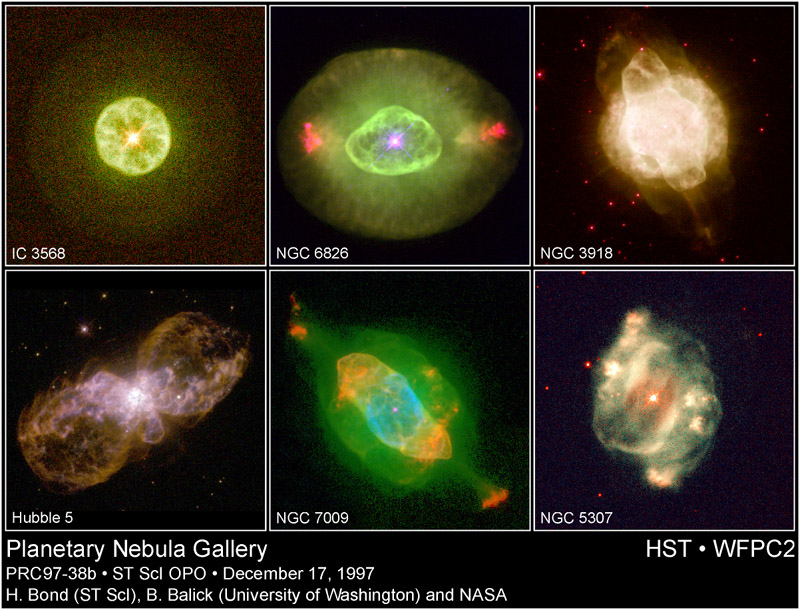
Most stars in our universe aren’t alone, and stars regularly interact gravitationally. In his models, Shiber considered what would happen if the small companion star had jets. When a star cannibalistically strips material from a neighbor, that in-spirally material it is eating can generate jets of material that point out the star’s poles. By adding this extra bit of physics to his computer software, Shiber was able to replicate the stripping of a star’s atmosphere and visualize amazing geometries reminiscent of what we see. This work still has a ways to go, but it appears to be going in the right direction, and it is a beautiful direction too.
One of the most frustrating things about astronomy is that most of the things we’re interested in don’t change on human timescales or even humanity-length time scales. Planets form over hundreds of thousands of years, galaxies merge over billions of years. Things generally don’t change such that we can see them. There are explosive exceptions, however. Supernovae can go off in moments, and generate nebulae that we can see expanding across years.
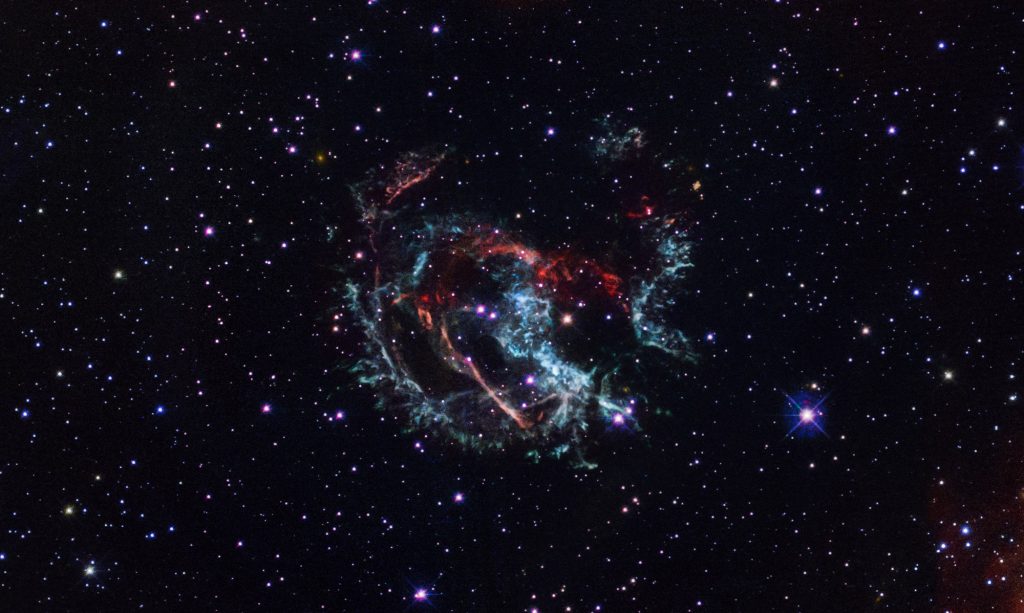
Recently, a team of astronomers using the Hubble Space Telescope imaged a ghostly nebula in the nearby Small Magellanic Cloud. This is a supernova remnant with the uninspired name 1E 0102.2-7219. This object was imaged twice by Hubble, with the two data sets being taken ten years apart. Careful analysis of the tadpole-shaped knots of glowing gas revealed their slow motion across the sky. Working backward, researchers John Banovetz and Danny Milisavljevic were able to estimate this supernova’s initial explosion could have been roughly 1700 years ago, during the Roman Empire, had the Roman Empire been in the Southern Hemisphere. Unfortunately, this object’s southern location means it was probably seen but by a culture that hasn’t left us written records we can look through.
Supernovae like this should produce a neutron star when they go off, and this neutron star can be sent rocketing out of the explosion like a cannonball. This team used their Hubble data to try and find where that neutron star ended up. They’re not sure if they’ve found it or found a knot of glowing gas masquerading as a neutron star. If they did find it, the neutron star would have been the fastest so far detected and would have been moving at an amazing two million miles per hour. More observations are needed, and when they are published, we’ll bring you an update right here on the Daily Space.

Our final story of the day brings a new view on a galaxy that is an old favorite to many amateur astronomers: the Whirlpool Nebula or M51. While the image we’re showing may look like it was made with some new photoshop or Instagram filter, it is actually a combination of a Hubble image and magnetic field data taken by the SOFIA airborne observatory. Using its own style of polarized glasses, SOFIA is able to see how magnetic fields twist through the galaxy. To the surprise of the observers, and adding to the beauty of this image, these lines become more chaotic the farther one looks from the edge of the galaxy.
I kind of want a magnetic field filter for Instagram, but I’m not sure I can afford a camera like SOFIA’s. For now, I’m going to remind you all to go out and look up this long holiday weekend. Will be back with a new episode on Tuesday when Dr. Darby Dyer joins us to talk about her new research on Venus.
This has been the Daily Space.
Learn More
Climate Change Impacts Earth, Including Truffles
- Eos articles: river sediment, cracking rocks, Cape Cod, truffles
- “The human impact on North American erosion, sediment transfer, and storage in a geologic context,” David B. Kemp, Peter M. Sadler & Veerle Vanacker, 2020 November 26, Nature Communications
- “Warmer, Wetter Climates Accelerate Mechanical Weathering in Field Data, Independent of Stress‐Loading,” M.C. Eppes et al., 2020 December 6, Geophysical Research Letters
- “Predicted climate change will increase the truffle cultivation potential in central Europe,” Tomáš Čejka et al., 2020 December 4, Scientific Reports
Galactic Three-Body Problems
- Chandra X-ray Observatory press release
- “AGN Triality of Triple Mergers: Detection of Faint X-ray Point Sources,” Adi Foord et al., to be published in The Astrophysical Journal (preprint on arxiv.org)
- “AGN Triality of Triple Mergers: Multi-wavelength Classifications,” Adi Foord et al., to be published in The Astrophysical Journal (preprint on arxiv.org)
“Old Faithful” Stellar Eruption Around Black Hole
- The Ohio State University press release
- “ASASSN-14ko is a Periodic Nuclear Transient in ESO 253-G003,” Anna V. Payne et al., to be published in The Astrophysical Journal (preprint on arxiv.org)
How to Harness Energy From Black Holes (DO NOT DO THIS)
- Columbia University press release
- “Magnetic reconnection as a mechanism for energy extraction from rotating black holes,” Luca Comisso and Felipe A. Asenjo, 2021 January 13, Physical Review D
Star-on-Star Destruction
Rewinding the Clock on a Supernova Blast
Chaos in the Grand Spiral Whirlpool Galaxy
Credits
Written by Pamela Gay and Beth Johnson
Hosted by Pamela Gay
Audio and Video Editing by Ally Pelphrey
Content Editing by Beth Johnson
Intro and Outro music by Kevin MacLeod, https://incompetech.com/music/


 We record most shows live, on Twitch. Follow us today to get alerts when we go live.
We record most shows live, on Twitch. Follow us today to get alerts when we go live.